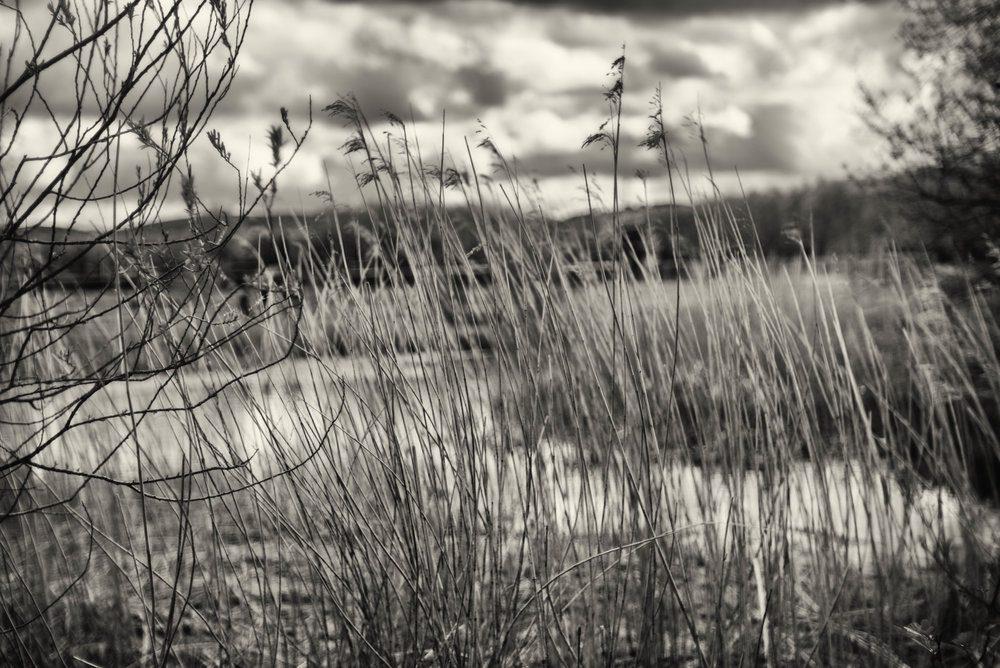
Russian cameras and lenses have often had a bad reputation in the past, particularly during the Soviet days. Some of this may have been due to the Leica counterfeits which became a ‘cottage industry’ in Russia at one time, particularly involving ones which carried nasty ‘military’ stampings or engravings, allegedly of German origin. All of the items coming from Russian during the Soviet era (called FSU cameras by aficionados) are not bad, and some items are, indeed, quite outstanding.
One such example is the Jupiter 3 5cm f/1.5 lens which was developed from the Zeiss Sonnar f/1.5 and produced in Russia between 1947 and the late 1980s. This lens design was also built in more recent times by Lomography.
On my recent trip to Russia, I managed to find a second-hand camera shop in St. Petersburg which had some Jupiter 3 lenses in Leica Thread Mount (M 39 or LTM). Having tested a few of them, I chose the following good example from 1954. Russian cameras and lenses have the useful touch of having the first two digits of the serial number the same as the last two digits of the year of manufacture. The body shell is made from what appears to be aluminium, and it can get quite grubby, but the lens seemed to be mechanically (apart from slightly stiff focus) and optically in excellent order. It came in a lovely ‘keeper’, which was well up to Leica standards for such items.
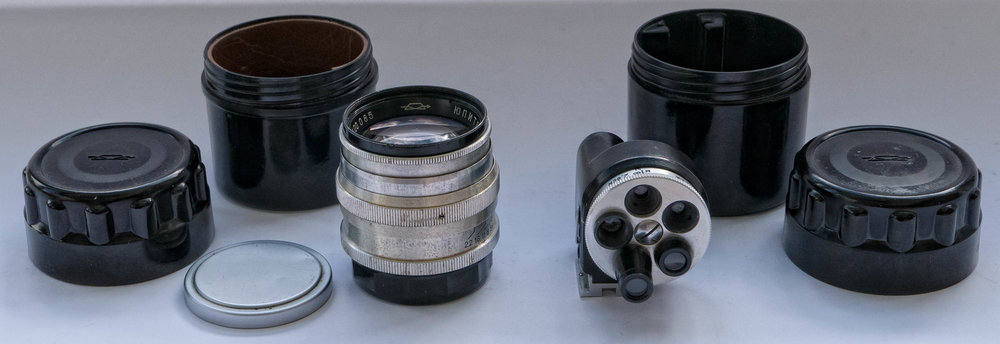
The other item in the above image is a turret viewfinder, about which more later in this article.
In St Petersburg, I used my Leica M10 to test the lens. At home I put it on my well-worn M240, using an LTM to M adaptor. Unlike the M10, this combination gives an approximation of the aperture used. The two look well together despite the discoloured aluminium on the lens barrel.
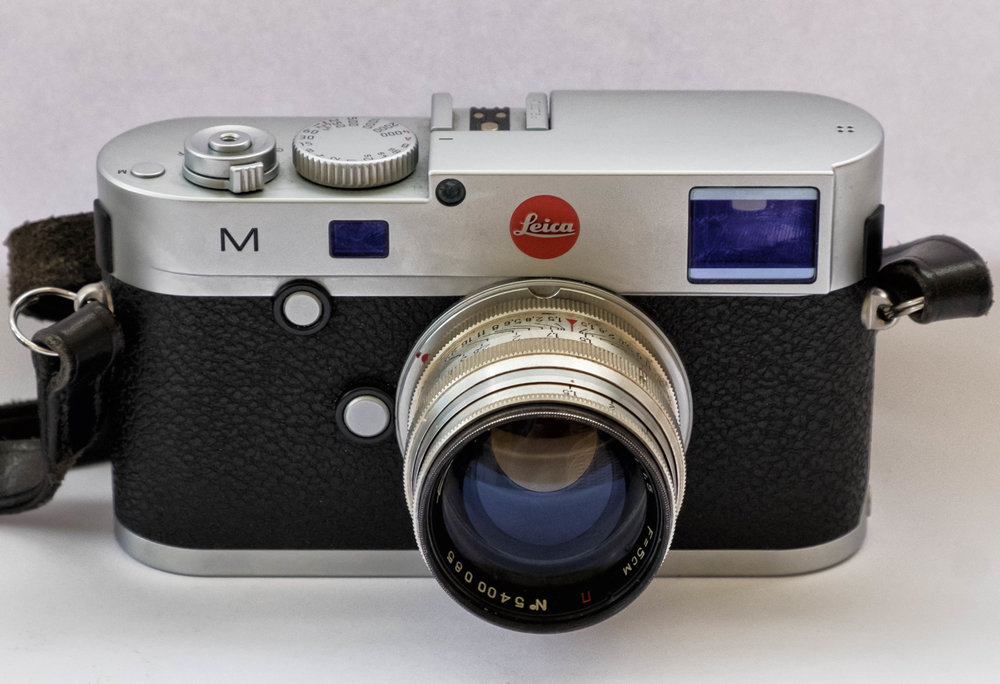
I might add that, as with some vintage Leica LTM lenses, the focus point indicator ends up at about one o’clock when an adaptor is used on an M-mount camera. But this is not an issue in use, and it is nothing to worry about.
The following pictures of my car and some reeds were both taken at f/1.5 which is where the real magic happens with the Jupiter 3. The photo at the top of the article was also taken at f/1.5 with the same combination
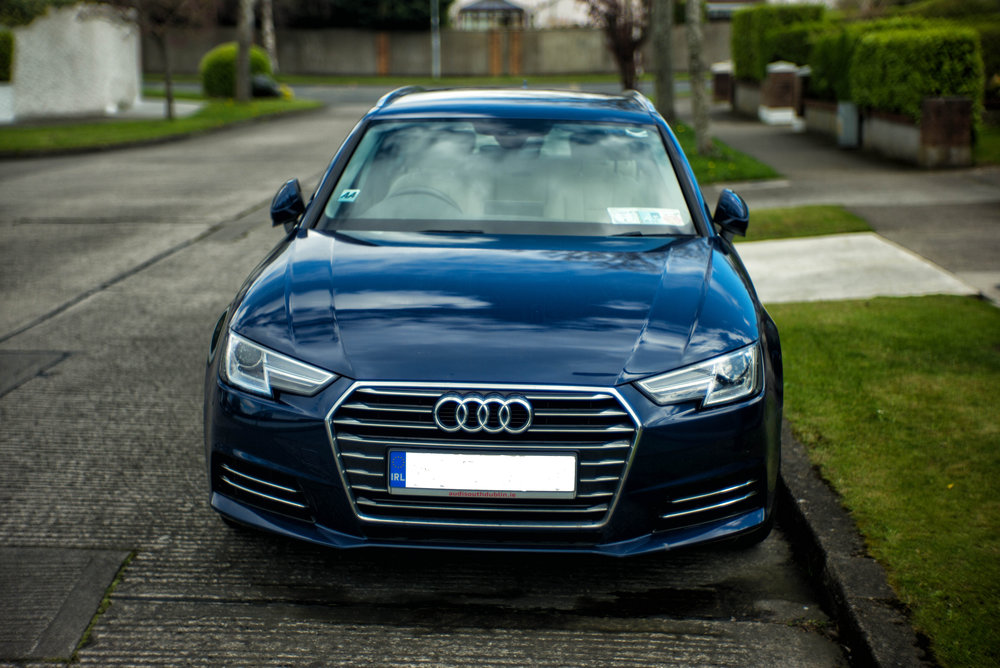
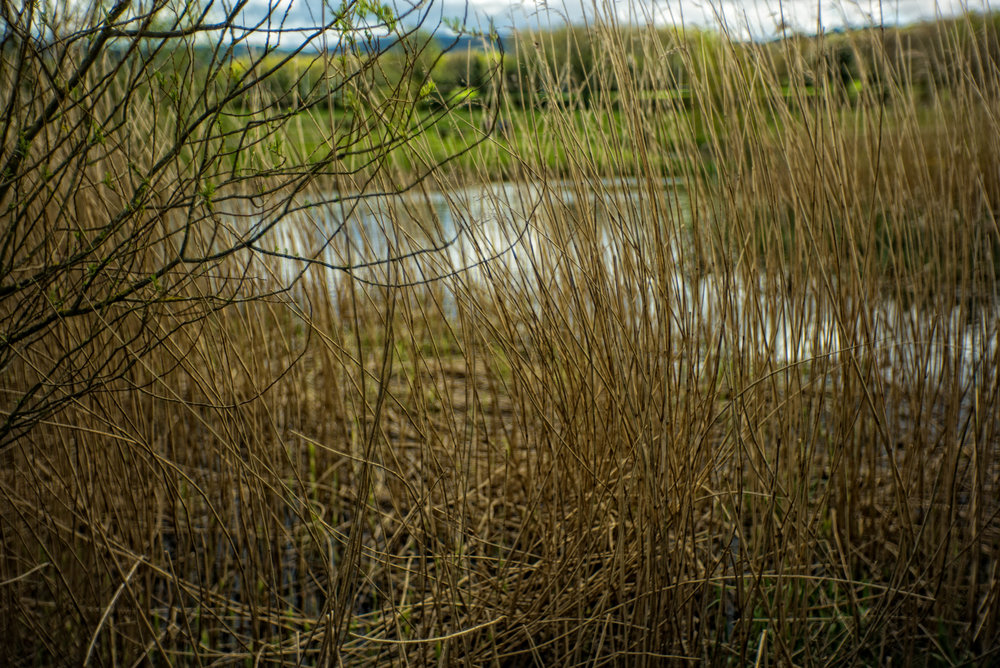
The effect here is not one of absolute sharpness falling away into bokeh, but rather one of relative sharpness with a glow in the highlights falling away into unsharpness to give a lovely ethereal painterly effect. I particularly like the ‘veil’ effect in the photo on the right above.
The magic still works until around f/2.8
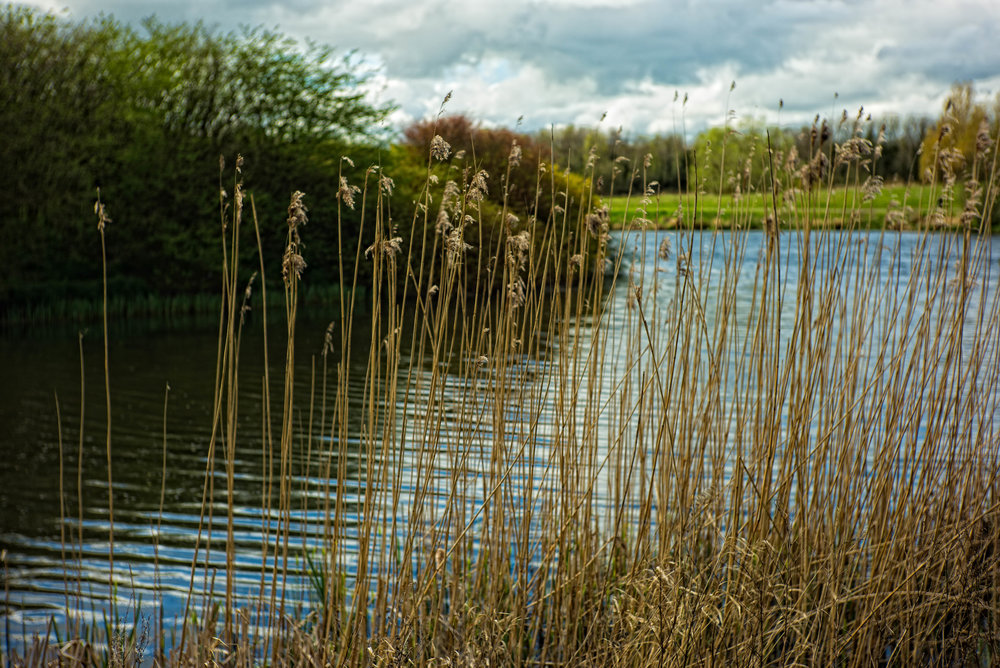
Stopped down to around f/8 the Jupiter 3 is as good as most modern lenses for nature and landscape
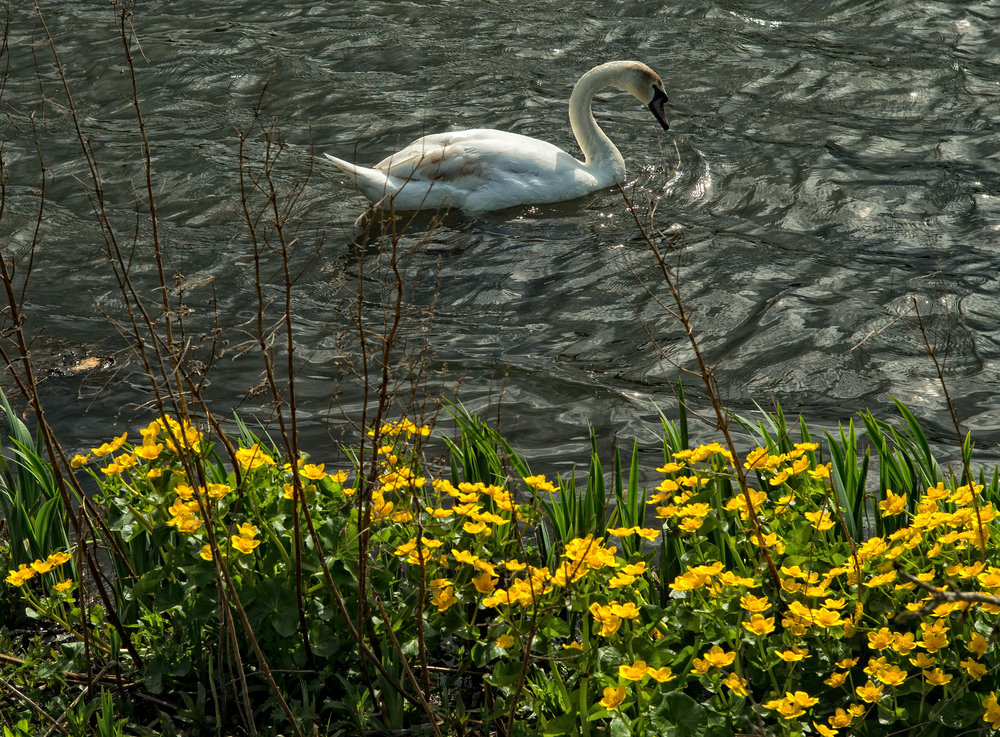
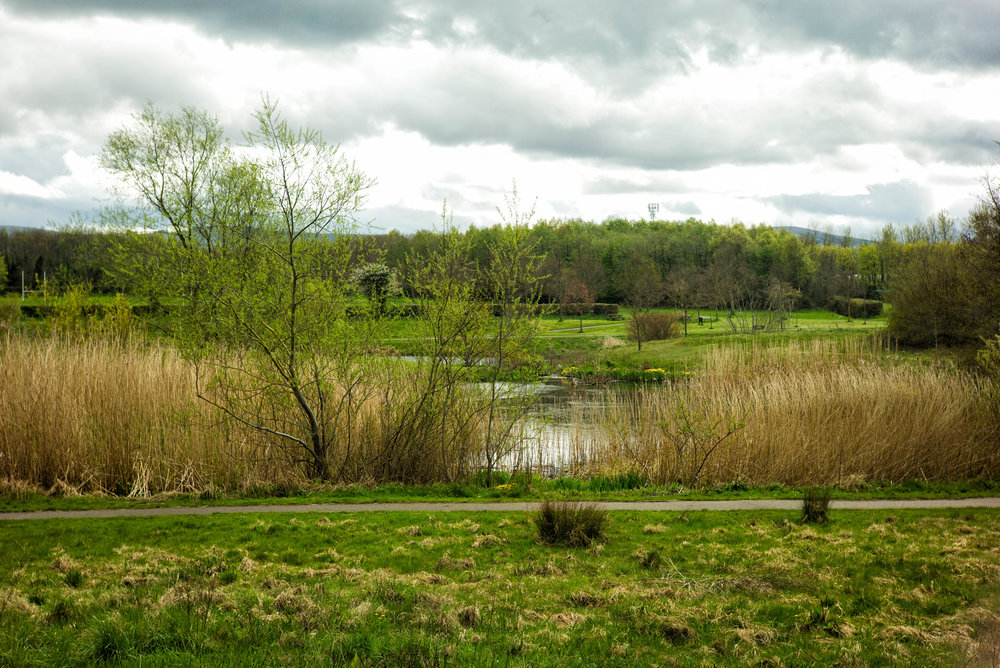
Having bagged some satisfying photos with a modern digital Leica, I thought that I should try the lens on a vintage FSU camera. Some years ago my wife gave me this Zorki 2 C as a Christmas present.
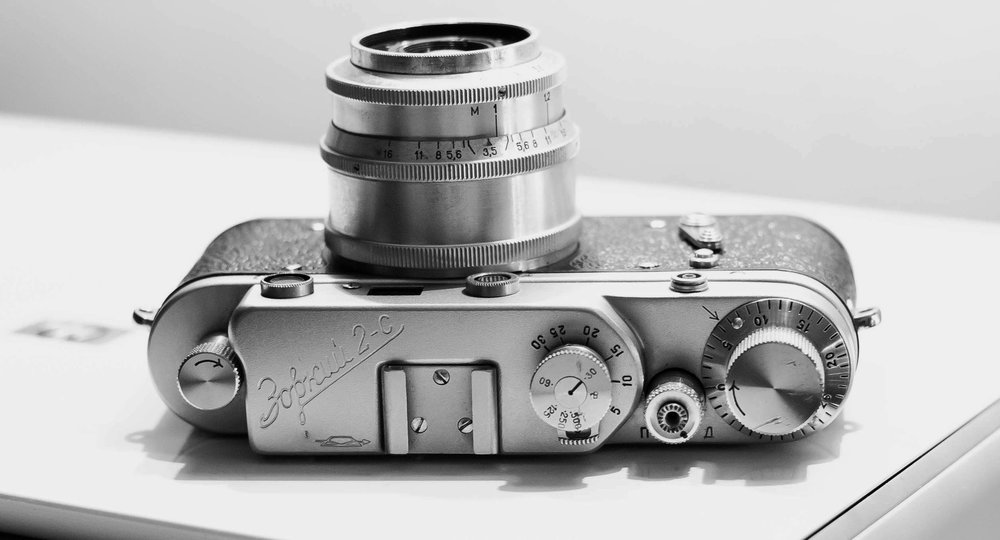
The Zorki 2 C was produced between 1955 and 1960 and the serial number on the camera tells me that it dates from 1959.
It came with an Industar 5cm f/3.5 lens (also from 1959) and a lovely leather Ever Ready Case (ERC) with the camera name engraved on the front in Cyrillic script. The camera has the KMZ (Krasnogorskiy Mechanicheskiy Zavod) logo which consists of a Dove prism, sometimes nicknamed a ‘tombstone’, with a broken arrow going through it to symbolise a ray of light. All of my FSU equipment items have this symbol, even the two ‘keepers’, which means they were all manufactured in the KMZ factory to the northwest of Moscow. I had an educational discussion about such logos with the dealer in St Petersburg. More about such Russian/Soviet camera logos can be found here.
I recently had a CLA (clean, lubricate, adjust) carried out on the Zorki by my friend Noel P Young, who is a skilled camera technician and a member of our little camera collectors’ circle here in Dublin. I wanted to test the camera and also to compare the Industar and Jupiter lenses on a camera model on which they would have been used during the 1950s.
First, two shots taken with the Industar lens
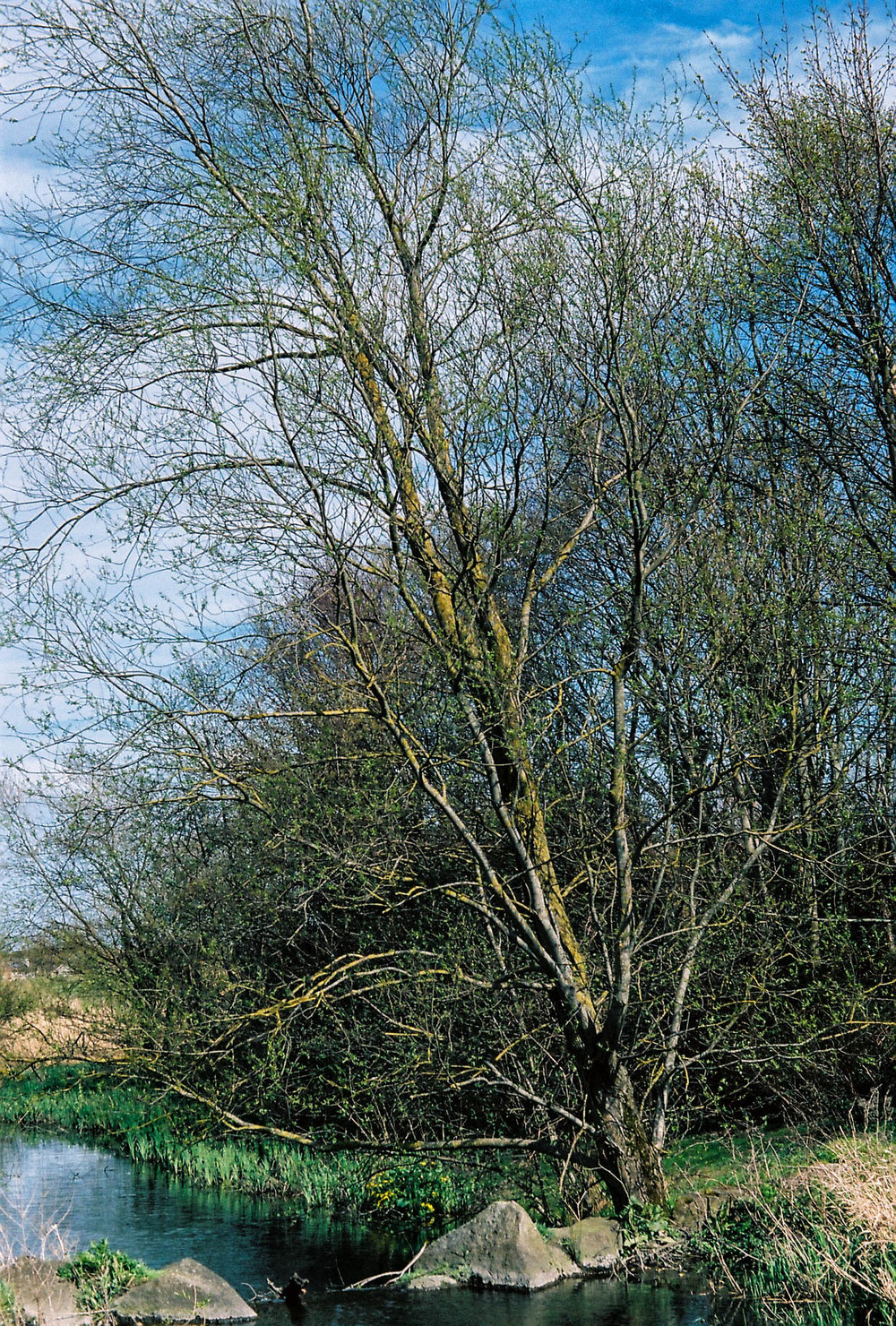
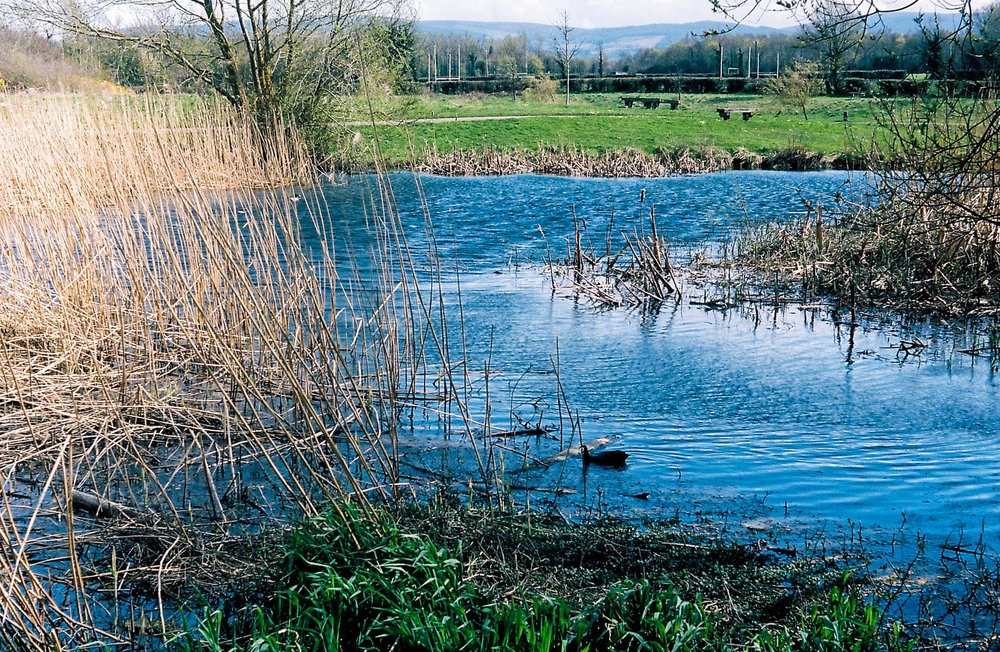
Then, two shot with the Jupiter
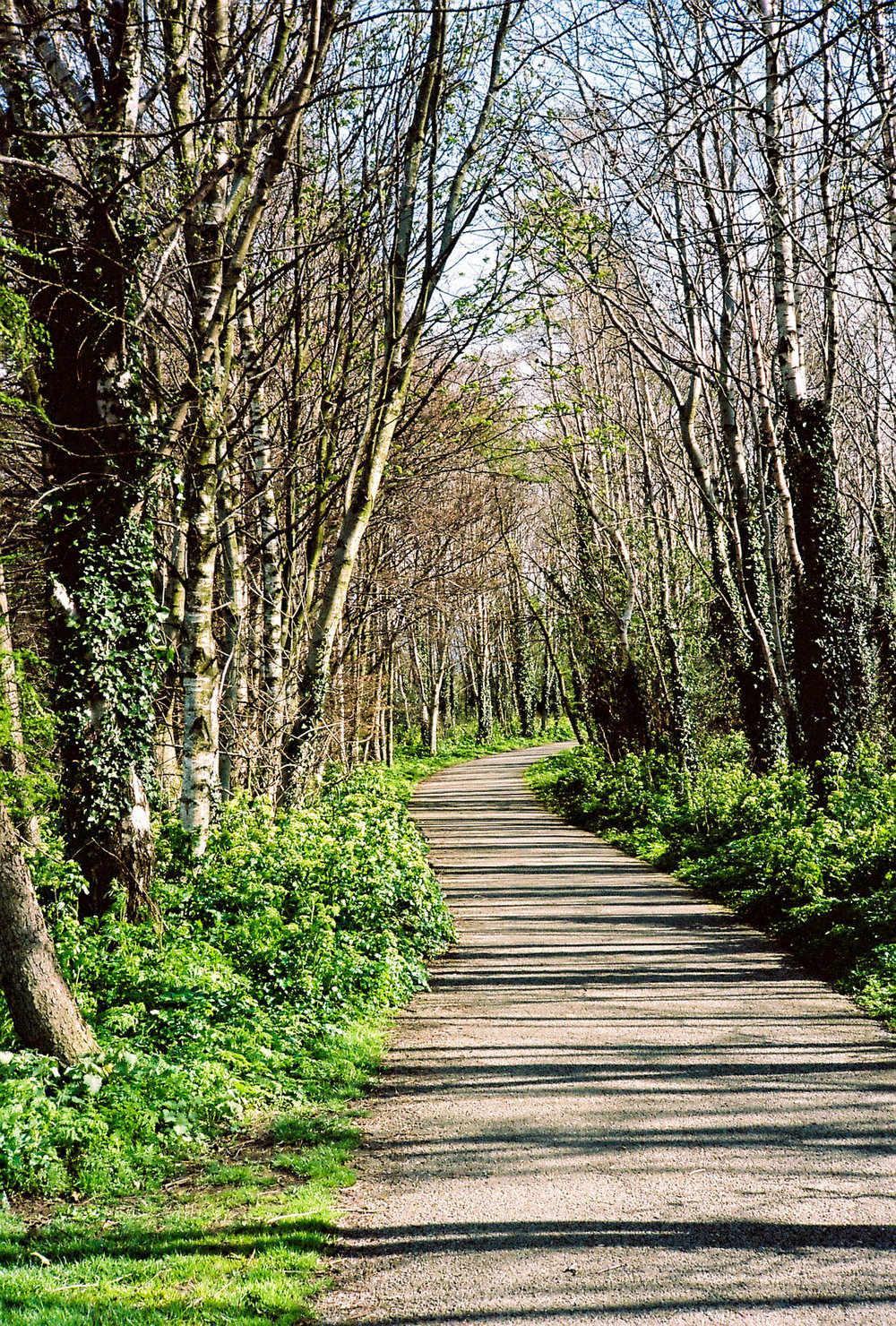
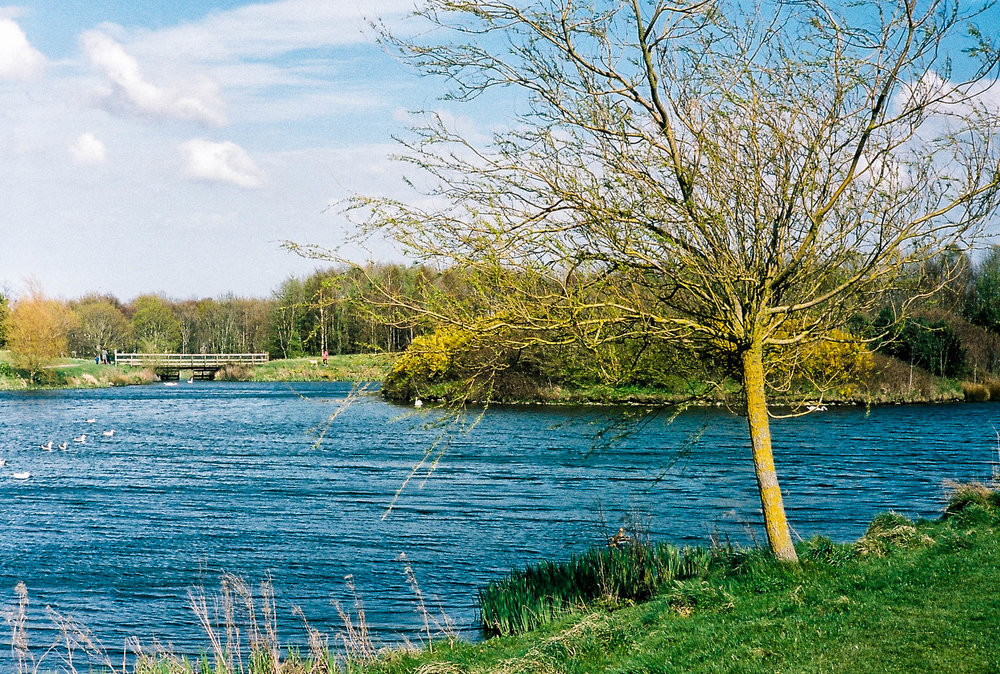
As with most film scans, it is almost impossible to make a definitive comparison, and I would advise readers to avoid doing too much pixel peeping on these examples. Stopped down as they were — it was a bright day, and there is a maximum speed of 1/500s on the Zorki 2 C — there is very little difference to my eyes. If anything the balance is slightly in favour of the Jupiter. With lower light and a much slower film (I was using Portra 160), it might have been possible to use the Jupiter lens in its ‘magic area’ on the Zorki.
The only problem I had with the Zorki was some light leakage on a frame or two when I foolishly, against best advice, changed the lens in very bright sunlight. Such problems can also occur with old Leica LTM models using cloth shutters, but I rarely change optics when I am using such models.
Finally, to the KMZ turret finder which is shown below on the right with the equivalent Leica VIOOH in the middle and its TUVOO 28mm attachment on the left.
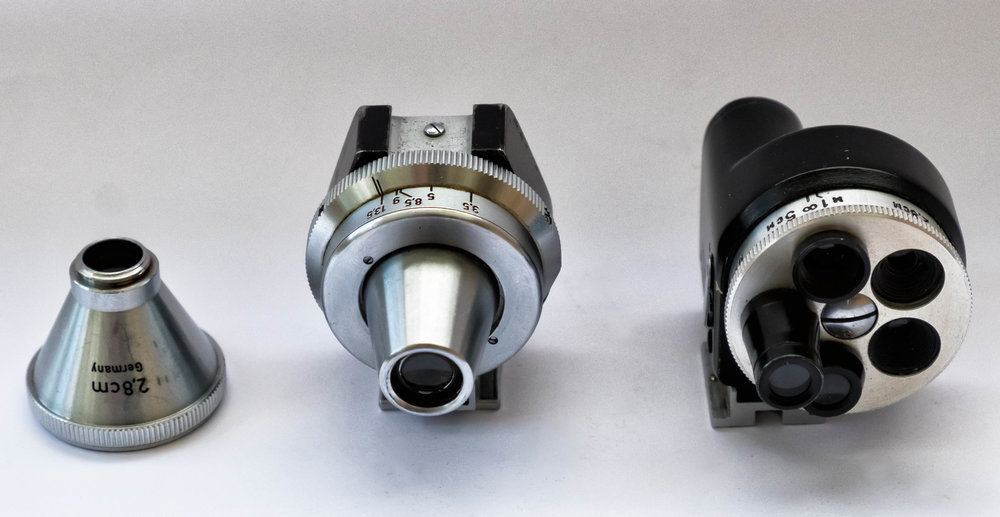
Both viewfinders have 28mm (VIOOH with TUVOO attachment only), 35mm, 50mm, 85mm and 135mm settings, with parallax adjustment, the KMZ by a slight twist to marks on a ring and the VIOOH by a slightly more awkward semi-circular lever at the back. The VIOOH also has 90mm, but it seems that KMZ did not produce 90mm lenses, only 85mm lenses such as the famous Jupiter 9. I tested an example of the ‘9’ in St Petersburg, but it was quite out as regards focus and so I let it go.
The VIOOH operates via a series of masks which increase or reduce as you change the focal length. This means that by the time you dial in 135mm you are looking at a very tiny image. For 28mm you have to screw the TUVOO onto the ‘nose’ at the front of the VIOOH. With the KMZ finder, the image zooms in via small lenses as you dial in longer focal lengths. It gives a beautifully clear view, and it has crosshairs and frame-lines. You can also see outside the frame-lines, giving a similar effect to that seen in the Leica M viewfinder windows. All in all, it is a splendid viewfinder, far superior to the Leica VIOOH, and it is usually to be had for about 20 quid. This chap here explains some of the differences much better than I can.
So, how did I find the FSU equipment as an experienced Leica user? Excellent I would say and, if you can find FSU equipment in good condition that you can test at the time of purchase, you could be very pleased with your purchase. My camera technician friend Noel says that FSU Cameras were very well designed and it is just the materials and construction standards that might be slightly below those of German companies such as Leica and Zeiss. There are also ‘millions’ of them around in Russia and other countries. I purchased my Jupiter lens here at Photo Lubitel.
_____________
- Subscribe to Macfilos for free updates on articles as they are published
- Want to comment on this article but having problems?

Just been reading ‘Rangefinder’ by Hicks and Schultz again and it is apparent they don’t like Soviet lenses.
Thanks Mike. I met Roger and Frances at the Leica Society AGM in 2014. They did not say anything about Soviet lenses, but Roger showed us pictures of swimming pools in Western Europe which were part of a project he was working on at that time. The Jupiter lens, which I chose in St Petersburg, after checking a few, is a good example of a lens for which their is nothing comparable in the Leica range. I am very pleased with the photographic output I have got using this lens. I trust my own judgement on such matters and I do have a considerable number of Leica lenses to compare with the Jupiter.
William
I should have said ‘swimming pools in Eastern Europe’ above.
William
Many thanks for this. I have a few of these from the 80s as they were a cheap way into photography. I’ll see if I can fire them up on a Leica M one day.
A few years ago I picked up a very clean Zorki C in Cork for not much more than a pint of Guiness.
Thanks Mike. I know plenty of good pubs in Cork, but I doubt if any of them would serve me a Zorki. There is a photographic business beside Canty’s pub behind the Imperial Hotel in Cork. That business has some nice vintage cameras in the window which I spotted when coming out of Canty’s last year. I went in the following morning, but they told me that they were unfortunately not for sale. I must have a wider look around Cork on my next visit.
William
An interesting story which stirred some memories. On your link to a website I spotted a Russian half-frame Chaika camera. They were quite popular in the Soviet Union in the 1960s because of their economical use of film which was often loaded in a darkroom cubicle in photo stores. Photography was hugely popular as an affordable Russian hobby.
Thanks David. A quick run through the Soviet Cams site reveals that millions of cameras were produced during the Soviet era. As incomes were relatively low in those years the cameras must have been available at low prices. Film and other associated costs must also have been low. I have seen some great photography produced on such cheap resources. We all know, of course, that it is the photographer who controls the photographic process, but some of the Soviet era lenses can add a genuinely different dimension to any type of photography at a very reasonable cost.
William
What an absolutely fascinating, and to me unknown, photographic world ! A sort of Leica shadow realm but also real in its own right. And I can really see what you mean about the special quality of that Jupiter lens in giving you painterly photographs. Thank you for the introduction. Sharpness is not everything !
That well known Leica user Henri Cartier Bresson said that ‘sharpness is a bourgeois concept’. Unfortunately, digital photography has increased the fervour for sharpness to almost cult status. I think that HCB was trying to advise us to consider photographic content first, but he could not have envisaged the changes that were to come with digital.
William
What don’t you know about cameras? Thanks for the tutorial.
Thanks John. I know a bit, but I still have a lot to learn. Every shoot with either digital or film takes me along a learning curve.
William
Interesting article and wonderful photos. Keep up the good work William.
Thanks Ken
William
Very interesting William. The Jupiter 3, 5cm f1.5 is a lens to look out for at Photographica. I recall that the late Ron Spillman (former Rollei Club Organiser and AP magazine writer) admired the Industar’s ‘flat field’ capability; his copy stand camera used an Industar lens; it’s a very capable close-up lens.
Thanks Dunk. Both the Industar f3.5 and the Jupiter 3 can take fine images. The Jupiter 3, just like the Sonnar, is capable of really ‘different’ images around f1.5 to f2.8 with a glow in the highlights and lovely bokeh. See you at Photographica next week.
William